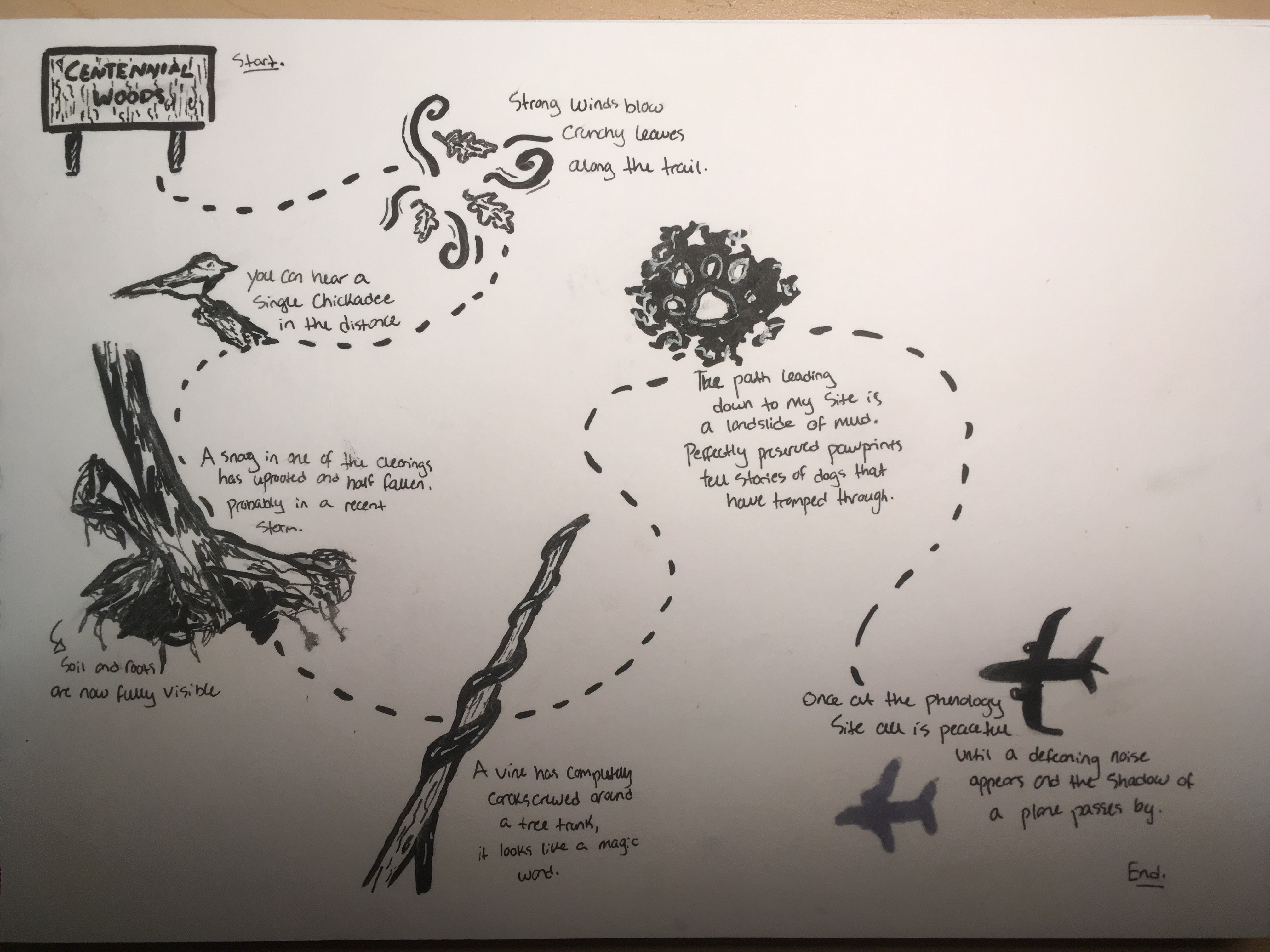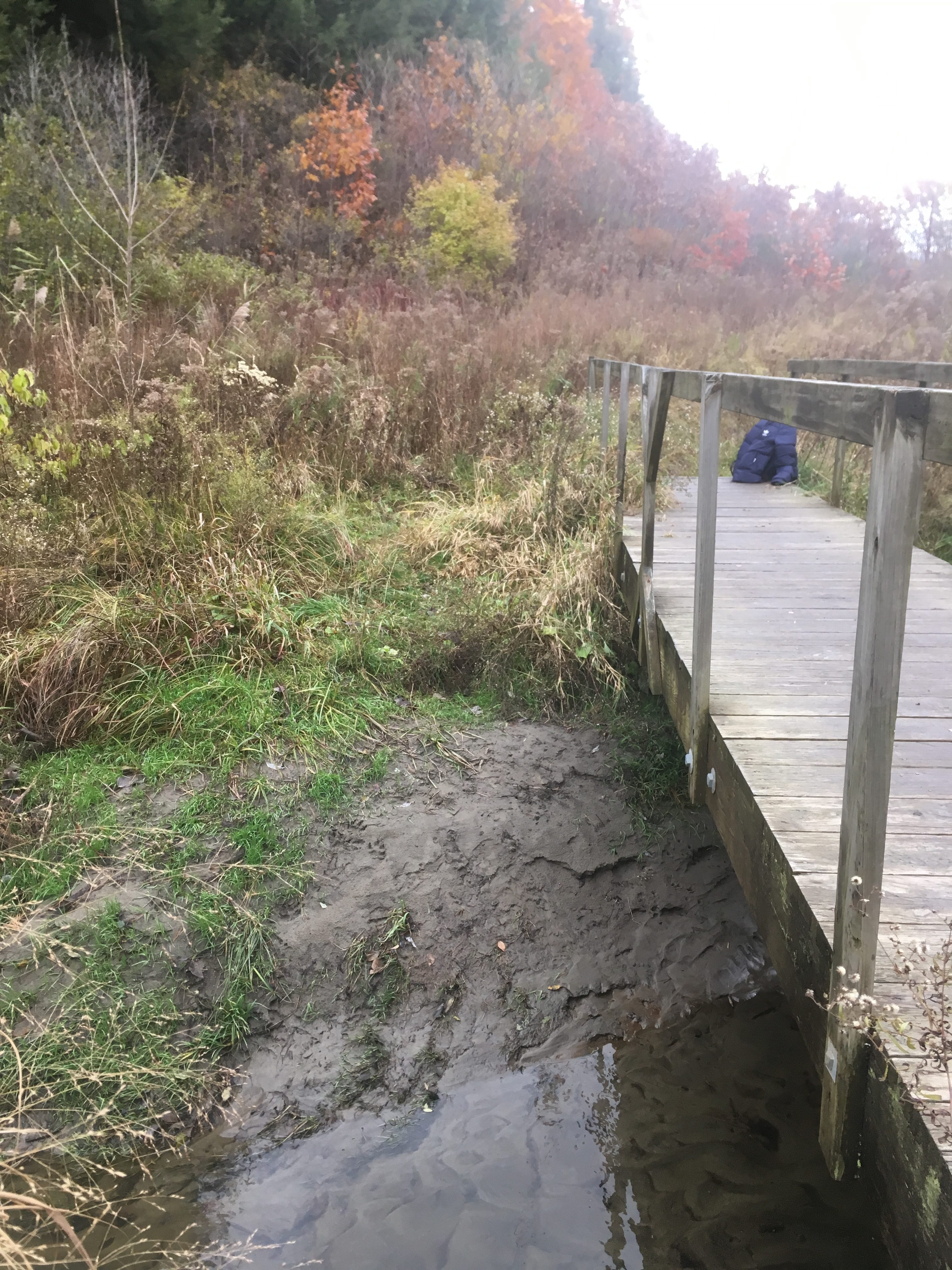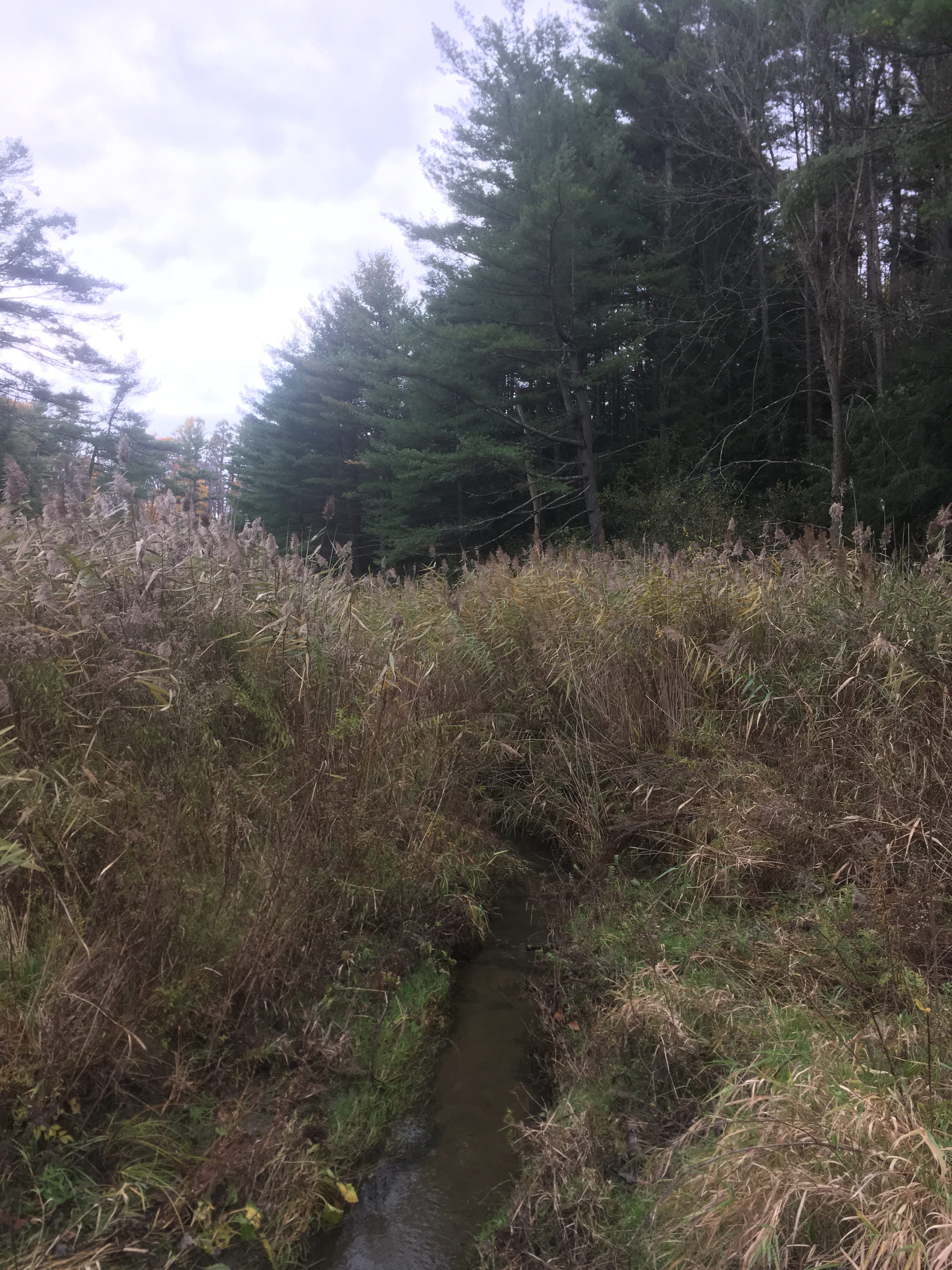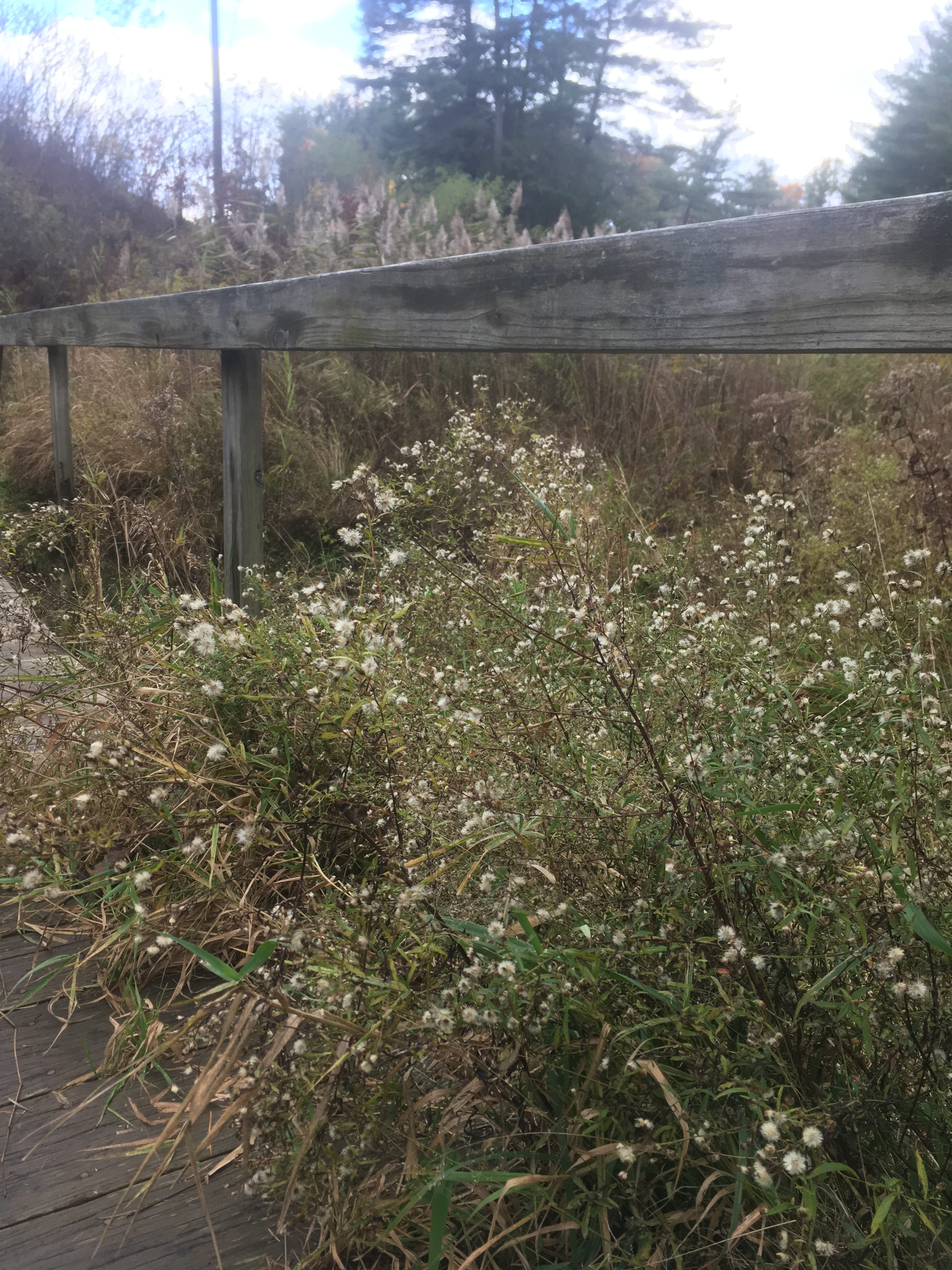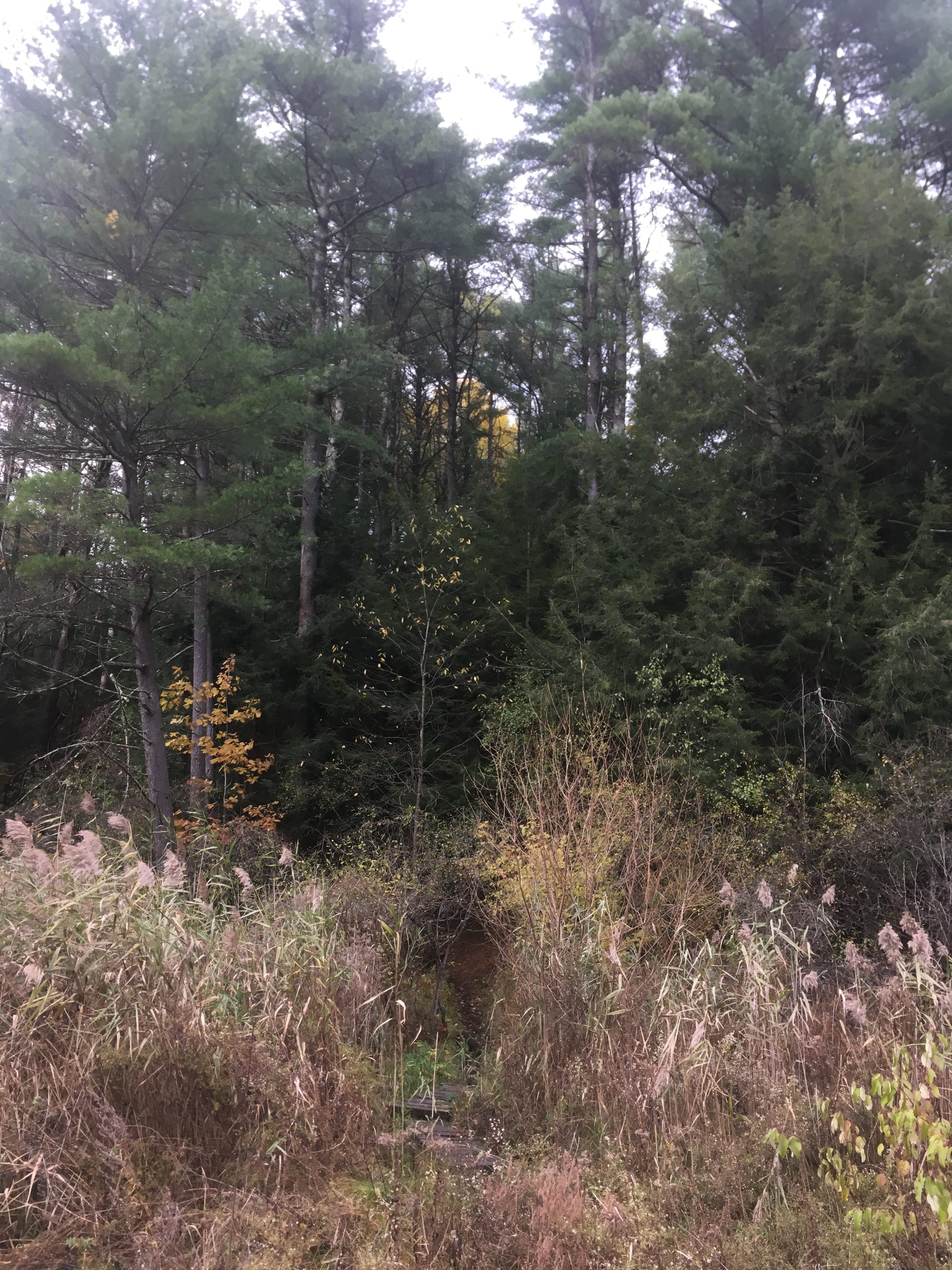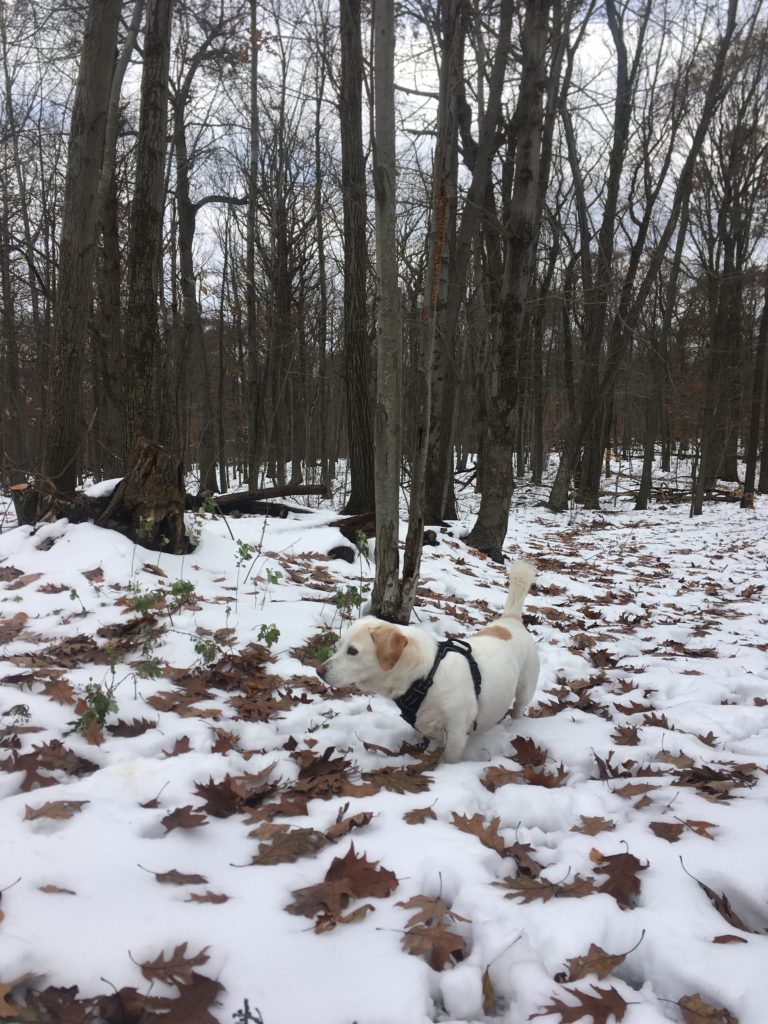 While home for Thanksgiving break this week I took my usual 5 minute trip up windy Eagle Rock Lane to Eagle Rock Reservation, 408 acres of forest nestled into dense suburban Northern NJ. My dog Gatsby, featured in the photo above, knows this drive by heart and whines with excitement as soon as he can see the rise of trees approaching as we climb up steep roads.
While home for Thanksgiving break this week I took my usual 5 minute trip up windy Eagle Rock Lane to Eagle Rock Reservation, 408 acres of forest nestled into dense suburban Northern NJ. My dog Gatsby, featured in the photo above, knows this drive by heart and whines with excitement as soon as he can see the rise of trees approaching as we climb up steep roads.
I caught Eagle Rock with its first layer of snow of the year. Two days old now, it’s become crunchy with an icy layer on top. Despite the blanket of white the forest is clearly awake. Squirrels not expecting the frost so soon are still rummaging about getting ready for winter, Gatsby keeps a close watchful eye on them. I didn’t see any deer, I know from experience that they like to wander through town during the day and retreat to wooded areas like this at night, but there were a few cloven hoof prints in the snow.
Gatsby and I make our way towards our favorite trail which runs alongside a stream. The volume of the stream has doubled compared to usual, simply from snowmelt. My dog who normally seizes any opportunity to jump in questionable water decides not to this time, he knows it’s too icy and deep. As we walk more, this gets me thinking about his relationship with this forest. I think that Gatsby with his powerful hound nose has a lot to teach me about the phenology of this place. I imagine that he can smell the paths of every creature in the forest, from bird and mouse to dog and person. Maybe he sees these lingering trails mapped out in his mind’s eye, the dynamic ever-changing story of this place, one I can only make guesses to understand.
I chose this place specifically since Centennial Woods in Burlington has become my new version of Eagle Rock Reservation. They are both natural areas in highly populated areas. They have high foot traffic, and have been designated natural areas for quite some time (Eagle Rock in the 1800s, Centennial in the early 1900s). Interestingly, Eagle Rock was designed in part by the Olmsted brothers, who are famous for Central Park, but made their mark in Vermont as well by designing Shelburne Farms. Most importantly, these two places have become my go-to spots for momentarily retreating from development and into nature.
The first thing I noticed while in Eagle Rock is that many of the leaves haven’t yet fallen, whereas in Vermont almost all of the hardwoods leaves are down (with the exception of young American Beech (Fagus grandifolia), who often keep their leaves through the winter). Below is a picture from Eagle Rock of a Norway Maple (Acer platanoides) that I thought was striking since it has kept almost all of its foliage, and most of it is still green.
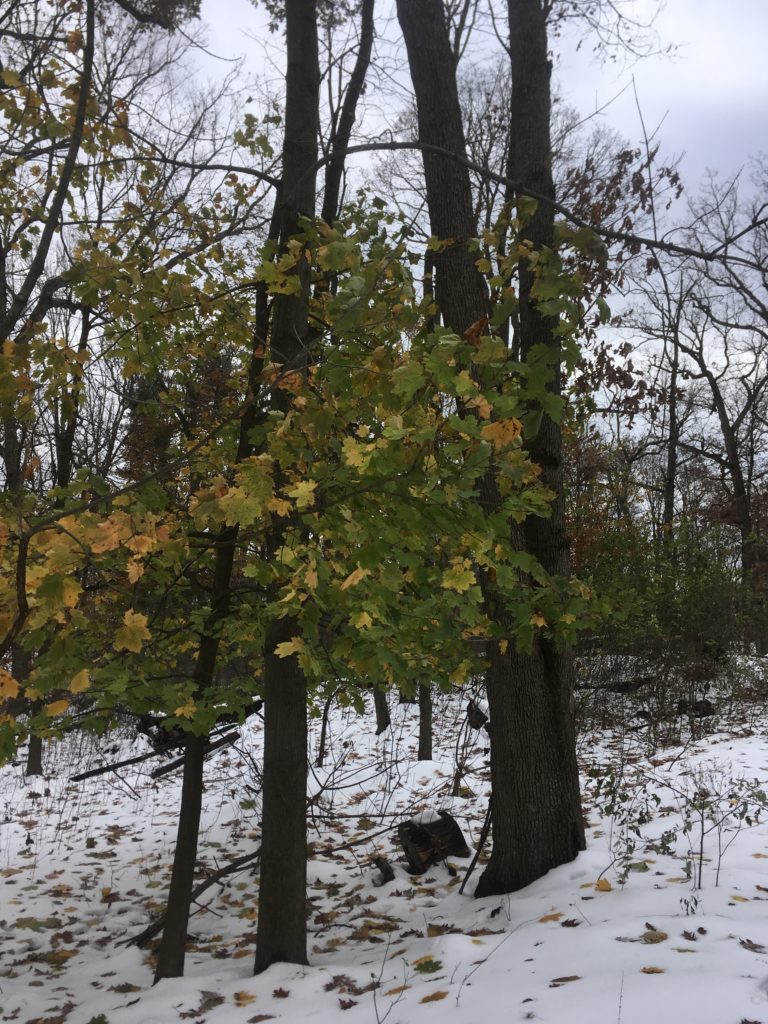
I’m assuming this difference is simply due to climate, as New Jersey has stayed much warmer than Vermont, even if it did experience some early snow as well.
Walking through both of these places it’s clear how important they are to their communities. Perhaps Centennial Woods and Eagle Rock Reservation don’t provide the most breathtaking views or challenging climbs, but they are clearly well loved and needed, bringing an essential dose of forest to more populated areas. I believe places like these are even more likely to become home to special memories, since really it’s the everyday things that make the biggest difference.
https://www.google.com/maps/d/edit?hl=en&hl=en&mid=1ISlOen7vYEJ2aoVrkIfRq0LzP1N1fTfW&ll=40.806753081711626%2C-74.23931790429543&z=17
-Luca

